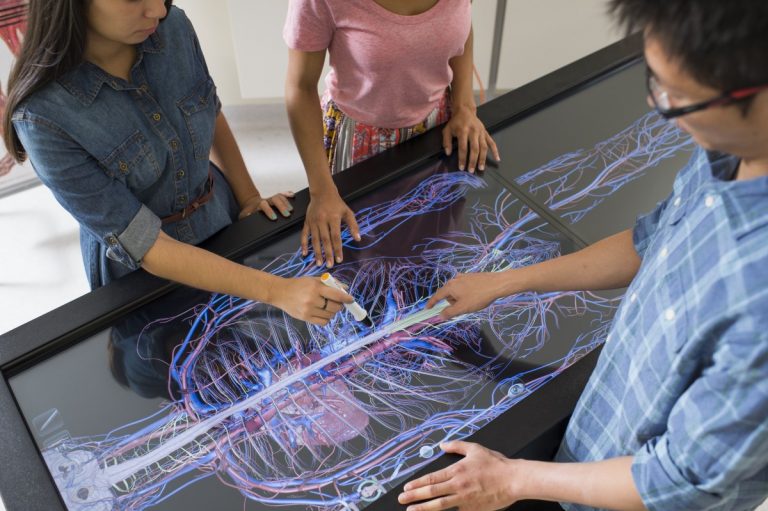
The world of high-technology, virtual reality and human simulation are no longer exclusively the realm of gamers or techies interested in the next big thing. Given the increased affordability, scalability and interest in its practical use, this tech-of-the-future is moving increasingly into the world of healthcare and in particular, health education.
One of the few universities investing in this innovative learning technology to make learning more stimulating, contemporary and engaging is the Faculty of Health Sciences at Curtin University. Ranked in the world’s top two percent by the Academic Ranking of World Universities 2016, Curtin University has trained more health professionals than any other tertiary institution in Western Australia.
The use of state-of-the-art training tools and high-tech simulation experiences is central to the curriculum at Curtin’s Faculty of Health Sciences. Such technologies enable students to gain confidence and competence in their clinical skills without putting actual patients at risk, challenging them to deal with real-world clinical situations in a safe and supportive environment.
One of Curtin’s flagship projects includes the use of an avatar called ‘Jim’, the empathy simulator. Jim is the world’s first avatar-based patient simulator and is the product of decades of research between Curtin and George Washington University in the United States. This pioneering computer simulation is so realistic that students learn important skills as they engage in a safe and supportive environment.
“Jim gives students the opportunity to practice in a safe, controlled, repeated way, so they’re less at risk to the general public when they go into their clinic training,” says Dr Janet Beilby from the School of Psychology and Speech Pathology.
Students studying Speech Pathology, Psychology, and Physiotherapy, along with many other health degrees, get the chance to interact with Jim and learn from their mistakes before encountering real patients.
The Faculty takes virtual reality a step further with their Virtual Home Visit (VHV) Training Tool, or as Curtin calls it, “a serious game”. This innovation from the Curtin research team, in partnership with software developer Learnbrite, is a game-based learning system that allows physiotherapy students to simulate a home visit to elderly people, offering support to allow them to remain at home and independent. The learner interacts with client avatars, identifies fall risks and hazards and then formulates a specific management plan that will allow the client to remain at home. Students can do this online, or via a laptop or iPad, but – even better than that – can immerse themselves in the virtual world with a VR headset.
Instilling the skills needed to interact with patients is key, but getting down to the nitty-gritty of human anatomy is even more important in many courses. Curtin’s revolutionary Anatomage Tables allow students to investigate the human body by dissecting 3D life-size virtual bodies. Students can zoom in, rotate and ‘cut’ into the virtual body to learn the inner workings of the human form. Any part of the anatomy can be examined and isolated to see how it links up to the bigger being. All of this gives students a solid handle on human anatomy without the use of often limited cadavers and before they encounter patients.

Source: Curtin University
These skills can be put into action in theA$2.5 million dollar state-of-the-art simulated hospital ward, housed within the School of Nursing, Midwifery and Paramedicine. The ward lets students from various health disciplines carry out simulated treatment and patient interaction in a realistic hospital setting.

Source: Curtin University
Pharmacy students get to refine their dispensing and counselling skills in the model pharmacy dispensary, the only one of its kind being used for training purposes in Western Australia. This multi-million-dollar mock-up of a modern operating pharmacy can simulate a range of real-life settings, so students feel comfortable and confident from the moment they enter the workforce.
Upon mastering their skills in the virtual and simulated space, Curtin grants students the opportunity to put them to the test in the real world at the Health and Wellness Centre. This presents an exceptional chance to work alongside qualified professional healthcare supervisors in delivering real-life care to real-life patients.
Achieving the end goal of quality patient care and exceptional health standards is made possible by the engaging, innovative learning methods implemented by the Faculty of Health Sciences at Curtin University. By plunging into the virtual world, students learn the expertise needed to exact change within the real-world setting.
Follow the Curtin University on Facebook, Twitter, YouTube and LinkedIn







